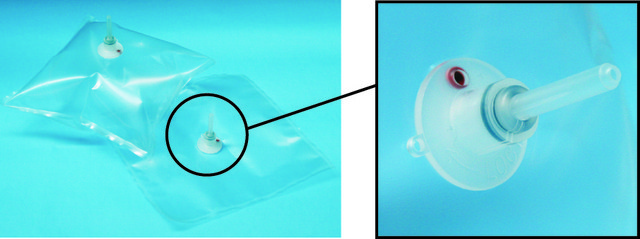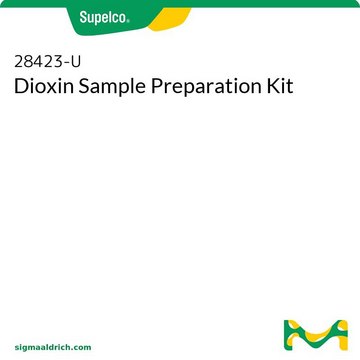48924-U
Pre-Activated Florisil®
ampulized, for use with Dioxin Sample Preparation Kit, 60-100 mesh particle size, pk of 10
Synonym(s):
activated Florisil/magnesium silicate
About This Item
Recommended Products
Agency
suitable for EPA 1613
Quality Level
packaging
pk of 10
technique(s)
solid phase extraction (SPE): suitable
particle size
60-100 mesh
application(s)
food and beverages
compatibility
for use with Dioxin Sample Preparation Kit
General description
Analysis Note
- Insert glass wool plug into the tapered end of a graduated serological pipette
- Snap the ampul and empty contents completely into the serological pipette
- Top the Florisil® with approximately 1 mL of sodium sulfate and a glass wool plug
- Carefully dispose of the empty glass ampul
- Condition the bed to remove pockets of air and to wet the surface ofthe material using appropriate solvent or solvent combination
- Follow the remaining steps in EPA method 1613b.
Legal Information
Storage Class Code
13 - Non Combustible Solids
WGK
nwg
Flash Point(C)
Not applicable
Choose from one of the most recent versions:
Certificates of Analysis (COA)
It looks like we've run into a problem, but you can still download Certificates of Analysis from our Documents section.
If you need assistance, please contact Customer Support.
Already Own This Product?
Find documentation for the products that you have recently purchased in the Document Library.
Related Content
This page is intended to make it easier to find the consumables you need based on the analytical method you’re using. Methods included on this page come from the EPA, Standard Methods and ASTM.
Our team of scientists has experience in all areas of research including Life Science, Material Science, Chemical Synthesis, Chromatography, Analytical and many others.
Contact Technical Service




